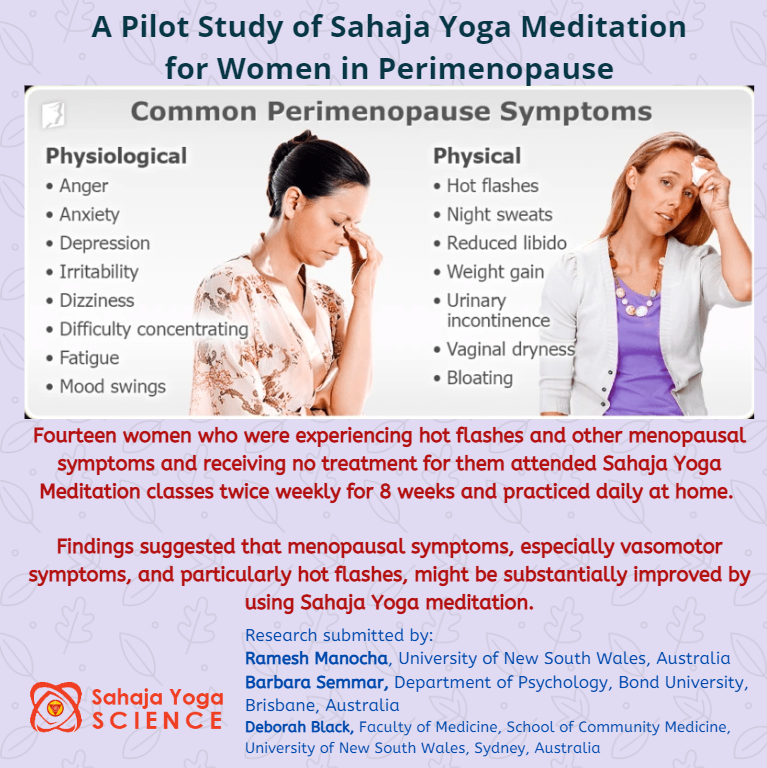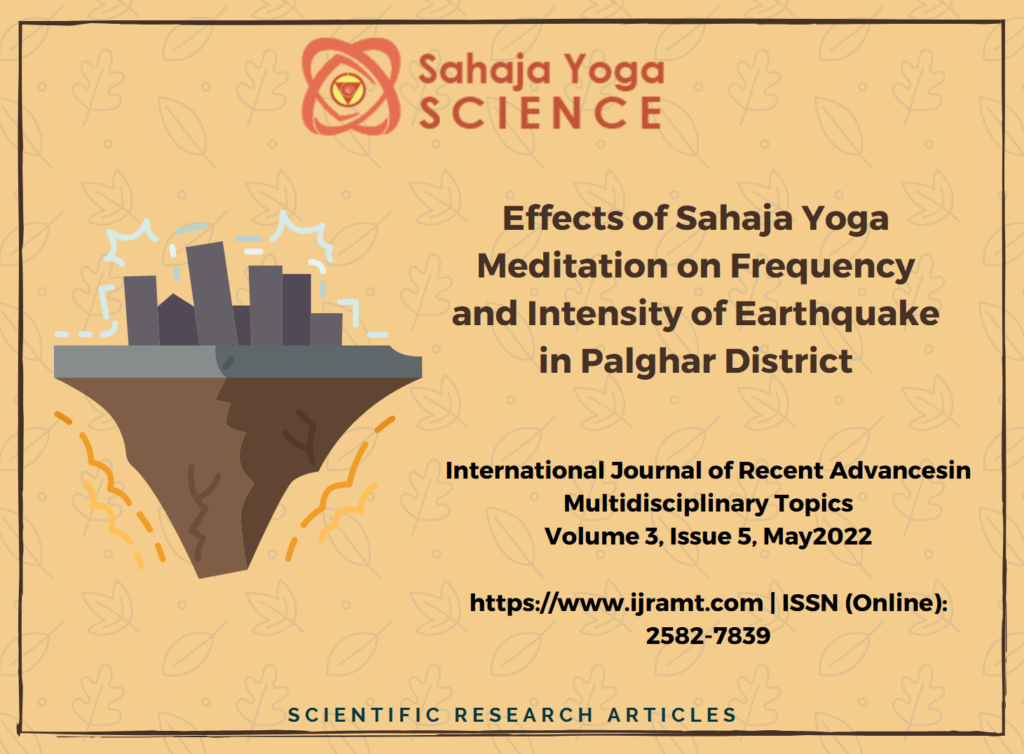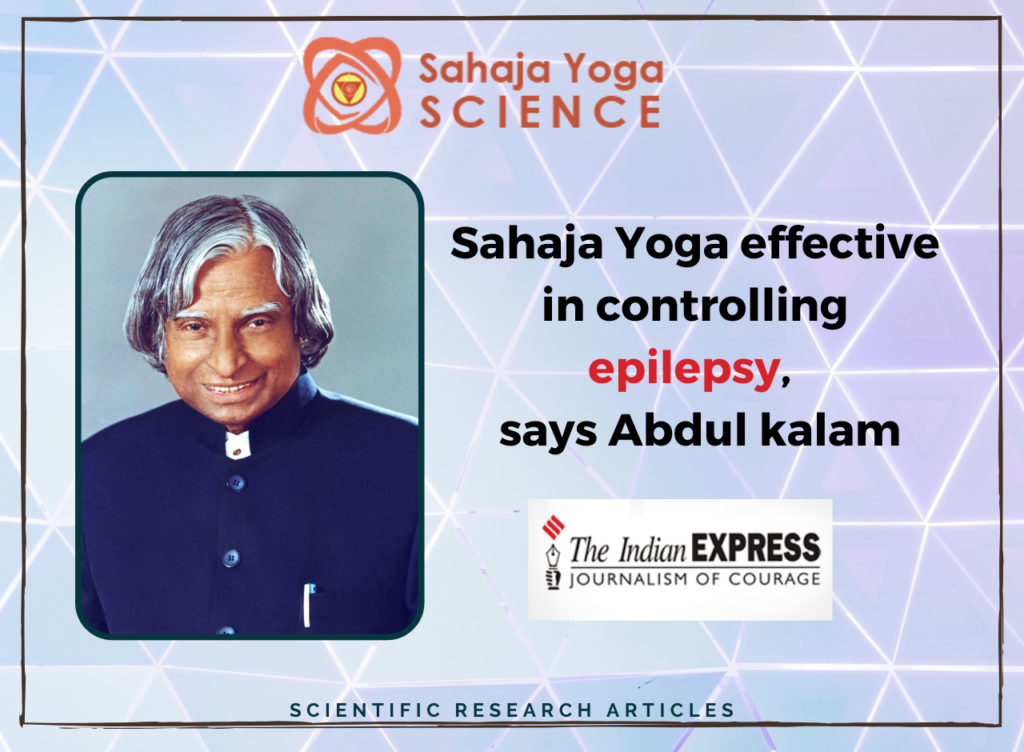Article submitted by:
Ramesh Manocha
Sydney Menopause Centre, Royal Hospital for Women, Sydney, NSW, 2031, Australia
Barbara Semmar
Department of Psychology, Bond University, Brisbane, Australia
Deborah Black
Faculty of Medicine, School of Community Medicine, University of New South Wales, Sydney, Australia
Abstract
Menopausal symptoms often feature or are worsened by psychological and psychosomatic factors. As there is limited research into the potential role of psychological interventions, especially meditation, for the treatment of these symptoms the current study adopted an AB case series design with a follow-up phase.
Fourteen women who were experiencing hot flashes and other menopausal symptoms and receiving no treatment for them attended meditation classes twice weekly for 8 weeks and practiced daily at home.
A mental silence orientated technique of meditation called Sahaja Yoga Meditation (SYM) was taught.
The Hot Flash Diary, Kupperman Index, MENQOL, Greene’s Climacteric Scale and STAI, were administered at :
- baseline,
- mid treatment (4 weeks),
- post-treatment (8 weeks) and
- at 8 weeks follow-up.
Substantial improvements in all measures occurred at post treatment.
Changes in vasomotor symptoms, especially hot flashes, were most prominent as a significant decrease of 67% at post-treatment and 57% at follow-up (χ2 = 11.7, p < .003) were noted and Kupperman’s Index score decreased by 58% at post-treatment and 40% at follow-up (χ2 = 11.7, p < .005).
All other symptom measures improved substantially from baseline to post-treatment, non-parametric analysis indicating that most of these changes were significant.
These findings tentatively suggest that menopausal symptoms, especially vasomotor symptoms, and particularly hot flashes, might be substantially improved by using Sahaja Yoga meditation.






